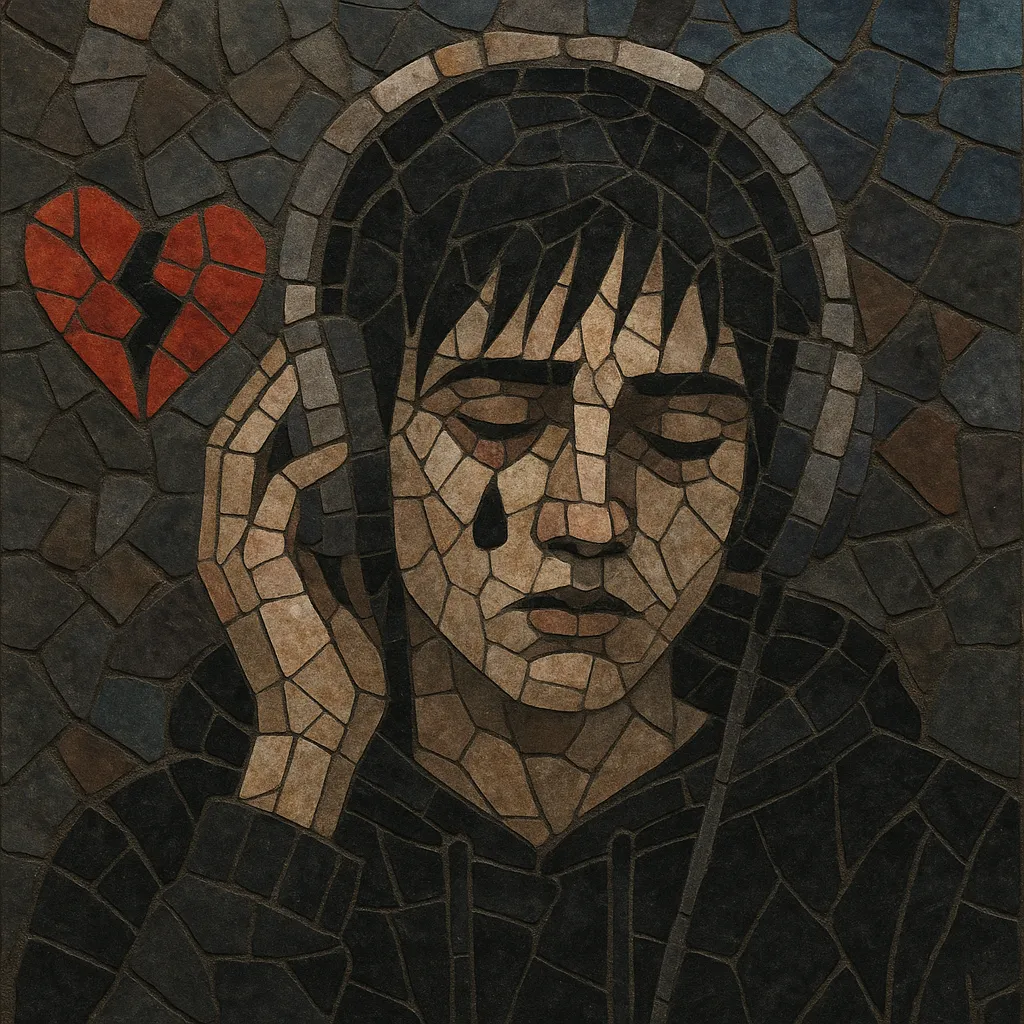Emo rap blends the confessional lyricism and melodic sensibility of emo and pop‑punk with the rhythms, production techniques, and flows of contemporary hip hop and trap. Songs often feature sung‑rap deliveries, heavy use of Auto‑Tune, minor‑key progressions, guitar loops or samples, and 808‑driven drums. Themes typically center on heartbreak, loneliness, anxiety, substance use, and self‑reflection, presented in direct, diary‑like writing.
The sound crystallized on platforms like SoundCloud, where artists embraced lo‑fi aesthetics, short song lengths, and highly personal cover art and branding. Emo rap’s crossover appeal brought rock textures back into mainstream rap and helped pave paths for a new wave of genre‑fluid pop, punk‑rap energy, and internet‑native micro‑scenes.
The roots of emo rap lie in the online underground where cloud rap’s hazy textures and alternative hip hop experimentation intersected with the emotional candor of emo and pop‑punk. Early internet rappers and collectives normalized melancholic, melodic flows over atmospheric beats, while bedroom producers began pairing trap drums with clean, chorus‑laden guitars. This period established the core palette: minor‑key progressions, 808s, Auto‑Tuned vocals, and confessional writing.
SoundCloud provided a frictionless pipeline for young artists to self‑release raw, genre‑blurring tracks. Scenes and collectives such as GothBoiClique helped codify the style—short songs with guitar loops, half‑sung hooks, and vivid, vulnerable lyrics. Artists like Lil Peep and XXXTentacion popularized the approach, while tracks such as Lil Uzi Vert’s “XO TOUR Llif3” demonstrated that emo themes and melodic rap could dominate mainstream charts. The DIY visual language—collage‑like covers, nostalgic fonts, and candid photography—became as recognizable as the sound.
Juice WRLD’s rapid ascent cemented emo rap as a dominant pop force, showing that freestyle‑driven, melody‑first rap with openly vulnerable lyrics could be radio‑ready. Major labels began signing artists who fused rap cadences with emo/pop‑punk hooks. Meanwhile, production evolved: cleaner mixes, slicker guitars, and pop‑leaning structures coexisted with the genre’s lo‑fi origins. The scene also sparked widespread conversations about mental health and substance abuse as themes became more central and autobiographical.
Emo rap’s DNA spread into multiple directions: punk rap’s mosh‑pit intensity, trap metal’s screamed vocals, and internet‑born pop forms like hyperpop and digicore adopted its melodic emo sensibility and confessional tone. Simultaneously, a pop‑punk resurgence emerged in tandem with melodic rap, creating a feedback loop between rock and hip hop. The genre remains a touchstone for young artists who view genre boundaries as porous and storytelling as paramount.
Start with a minor‑key guitar loop or soft synth pad. Aim for an intimate, slightly lo‑fi tone: clean DI guitars with light chorus, tape saturation, and roomy reverb sit well with 808s. Keep arrangements sparse to foreground vocals.
Use simple, looping progressions in natural minor (Aeolian) or Dorian—common cycles include i–VI–III–VII or i–VI–VII–V. Write toplines that blur rapping and singing, focusing on memorable, emotive hooks. Pentatonic minor and natural minor scales work well for vocal melodies and ad‑libs.
Program trap drums at 130–160 BPM (or 65–80 BPM halftime): tight kicks, punchy snares/claps on 2 & 4, and rolling hi‑hats with 1/8–1/32 note flourishes and occasional triplets. Layer subby 808s that either mirror or counter the kick pattern; glide notes add emotion.
Deliver verses with a sung‑rap hybrid. Use Auto‑Tune with moderate to fast retune speeds for a glossy, melodic feel, and double‑track or lightly layer harmonies for hooks. Write candid, first‑person lyrics about heartbreak, isolation, anxiety, and coping—avoid clichés by using concrete images, specific memories, and sensory details.
Keep songs concise (2–3 minutes). Open with the hook or a short four‑bar intro, then alternate verse–hook–verse–hook. Bridges can be a filtered guitar break or a vocal vulnerability peak. Reserve dynamic contrast (drop‑outs, drumless sections) to highlight key lines.
Prioritize vocal clarity: gentle de‑essing, subtractive EQ around muddiness (200–400 Hz), and smooth compression (2–4 dB GR). Sidechain 808s subtly to the kick and carve space between guitars and vocals with complementary EQ. A touch of tape or cassette noise and light clip distortion can preserve the DIY character without sacrificing loudness.
Use personal, scrapbook‑like visuals and candid photography to reflect the diaristic tone. If sampling emo/pop‑punk, ensure clearance or replay parts to avoid rights issues. Lean into authenticity—audiences respond to specificity and vulnerability.


